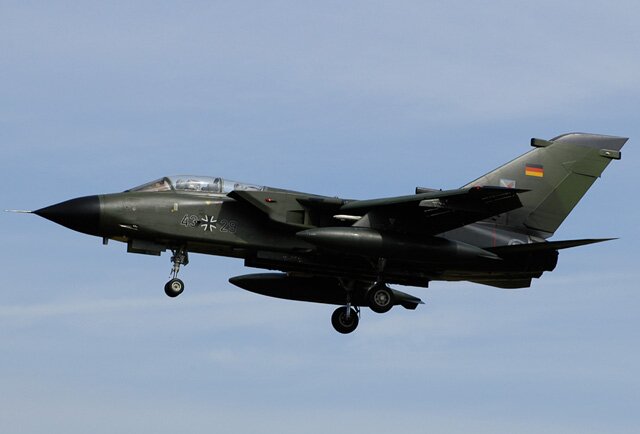|
From ACIG.org Europe & Cold War Database
ACIG had the chance to visit the base of the German Fighter Bomber Wing (Jagdbombergeschwader) 31 at Noervenich airbase near the city of Cologne. JBG31 is the oldest flying unit in the German Luftwaffe of today. It was formed in 1957 and was accepted into service in June 1958. Already in 1959 the Wing, which was flying the F-84 at that time, was placed under NATO command. 1961 was to be a busy year for the JBG 31. First it was given the name “Boelcke” in remembrance of the German WWI pilot Hauptmann Oswald Boelcke. It was given that name because Hauptmann Boelcke did not only achieve forty kills during his career, but also because he helped to develop many of the fighter tactics that are still used to day, before he died in an midair collision with another plane from his unit in 1916. Also in 1961 the first new F-104G arrived in Noervenich and the wing converted to that plane. It achieved the 200.000th flighthour of the F-104G in April 1982. The career of the much loved Starfighter ended in May 1983. During the period of F-104 operations the Wing lost 18 F-104Gs to accidents in which 14 pilots were killed.
In July 1983 the Wing made the first flight with their new weapon system, the Panavia Tornado IDS. The new plane meant that the wing needed to adjust the training style to the new weapons system. So it started deploying to Goose-Bay in Canada in 1985 to practice low-level operations there. This has been done every year since then. Only complaints in Canada about the negative effects on the environment have meant that other solutions have to be found. In 2004 the Wing did participate in the Cope Thunder 2004 exercise, which has become quite famous for the participation of the Indian Air Force. JBG 31 however has been a participant in large and well known exercises for years. The Wing deployed to Red Flag for the first time in 1989 and has been a regular participant since then. In 1994 Maple Flag had been added to the schedule. In Germany the Wing is a regular participant of Clean Hunter, as it does with many other training scenarios as well. Especially noteworthy is the participation of selected crews in the German variant of Top Gun. This exercise is held at Nellis AFB. It is the highlight during the training of German F-4 and Tornado crews that undergo the Fighter Weapons Instructor Course. The German crews have become a highly respected training partner (and adversary) of the Nellis based US squadrons. The participation of the Germans in US exercises is always highly welcome.
Other milestones for JBG-31 were the assignment to Crisis Reaction Forces of the Luftwaffe and NATO. The capability to deploy 8 Tornados to any place in the world within a short time has been proven during various exercises. (Dynamic Guard 94, Battle Griffin 96 and 99 for example). In July 1998 the wing celebrated its 40th anniversary. A Tornado was painted in a blue special colour scheme to celebrate the occasion. In 2000 the wing reached the 125.000th flighthour of the Tornado, which was a reason for yet another special scheme. December 2001 marked another important step for the wing. It became the first wing in the Luftwaffe to be equipped with LGBs. In June 2003 the wing celebrated the 45th birthday, closely followed by 20 years of Tornado operations in July. That was enough reason for another special scheme.
The future of the wing is currently not totally secured. Another series of cuts means that the Luftwaffe will be restructured at the end of the year 2004. But the staff of JBG31 is hopeful that they will remain unaffected, as they are the oldest wing in the Luftwaffe. If things should remain unchanged JBG31 expects to replace the Tornado wit the EF Typhoon in 2008.
JBG 31 has 2 squadrons 311 and 312. Those squadrons however do not have any aircraft assigned. Aircraft are assigned to the wing and flown by both squadrons as aircraft are available. Maintenance is performed by the technical squadron of the wing, Its largest unit, which is responsible for maintaining, arming, servicing and even limited upgrades to the aircraft. The Tornados of the wing can carry a wide variety of weapons. Those include conventional bombs (incl. retarded), cluster bombs, Sidewinders, and most noteworthy LGBs.
For this role the wing has been equipped with Litening pods that have been equipped with optics made by Carl Zeiss in Germany. The most commonly used LGB is the GBU-24.
I would like to thank Mike K. from the German Flugzeugforum, the personnel from JBG 31 and especially Stabsoberfeldwebel Engelbrecht, for making the visit possible.
© Copyright 2002-3 by ACIG.org |







